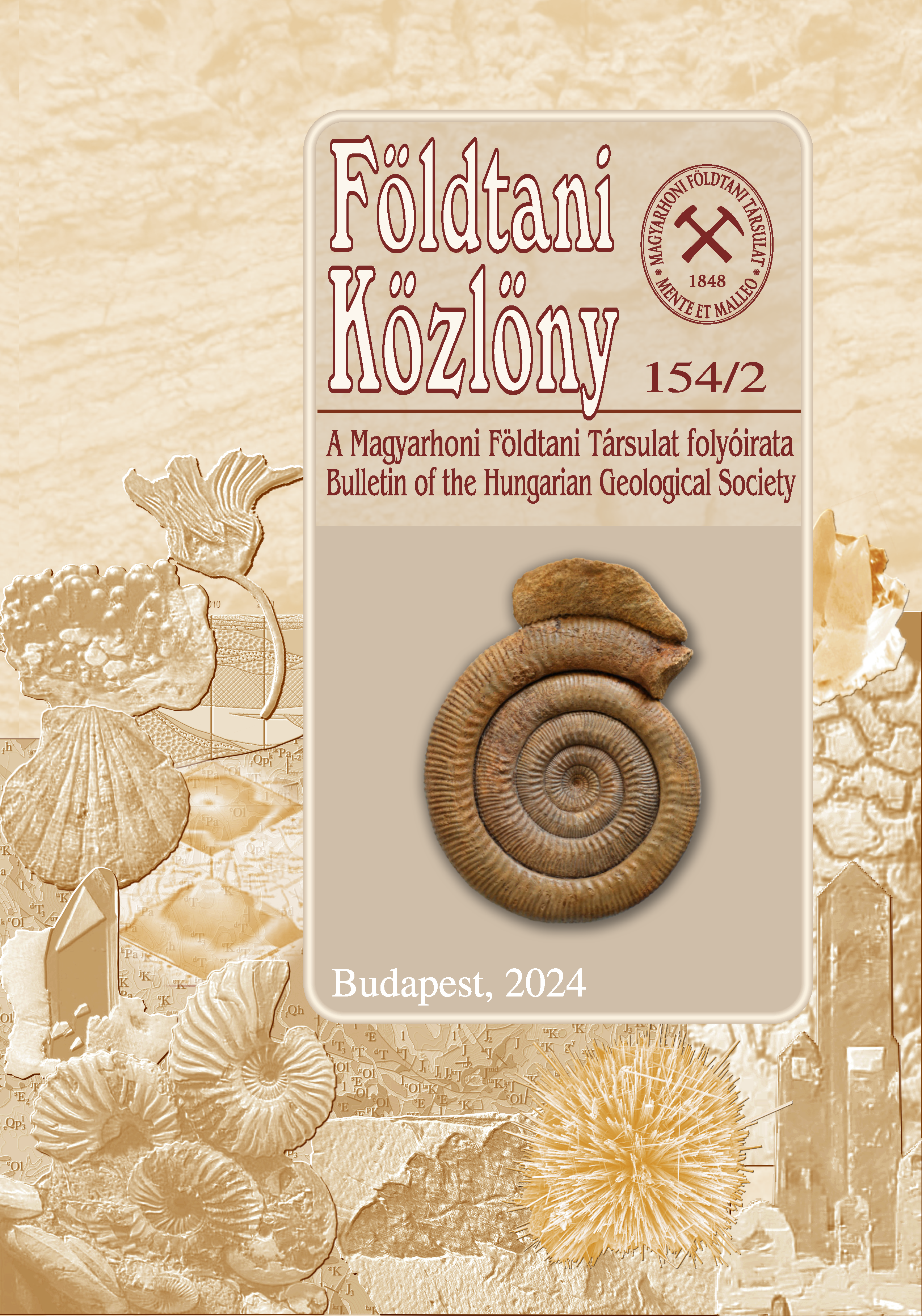The interplay of Palaeogene magmatic-hydrohermal fluid flow on a variscan granite intrusion: the age and formation of the barite vein at Sukoró, Velence Hills, Western Hungary
Abstract
On the southern slope of the Meleg Hill (Velence Mts) small quartz-barite veins have been exposed by mining
activities which took place in the 1950s. The age and formation conditions of this mineralization were for a long time
uncertain. Regionally, the host Variscan monzogranite intrusion was affected by different Variscan, Triassic and
Palaeogene mineralization processes. The alterations show essential differences in their mineralogy and fluid inclusion
properties, and consequently in their temperature and pressure formation. In some zones of the granite, the interplay of
the different fluid migration events has resulted in alterations with complex textural, mineralogical and geochemical
characters. The southern slope of the Meleg Hill, where the barite veins are located, is one of these complex zones of the
granite. Therefore, investigation of the quartz-barite veins required a complex method of approach; this included fluid
inclusion, XRD studies and radiometric age-dating.
Primary fluid inclusions measured in the barite revealed that the quartz-barite was formed from a heterogeneous
(boiling) hydrothermal fluid; the latter had a temperature of at least 240 °C temperature and salinities between 1–5 NaCl
equiv.wt%. Fluid inclusion texture and the microthermometric properties of the fluid inclusions directly prove a shallow
level hydrothermal system. In the Velence Hills this characteristic which is only evident in the Palaeogene hydrothermal
system. Fluid inclusion studies also revealed that Palaeogene andesite dykes close to the quartz-barite veins are slightly
older. Although the magmatic quartz crystals of the andesite dykes located in the vicinity of the mineralized veins contain
fluid inclusions related both to the subvolcanic and volcanic level of the Palaeogene fluid flow, they intruded prior to the
Palaeogene exhumation of the granite intrusion. Based on the XRD studies, the characteristic clay mineral phase in the
argillic alteration halo of the quartz-barite veins is illite; the latter is a feature of the Palaeogene alteration zones in the
Velence Hills. Illitic alteration related to the quartz-barite mineralization is confined to a narrow zone around the veins.
Besides illite, in the proximal zones of the alteration halo of the veins, kaolinite and smectite occur and together these
characterize the Triassic alteration zones of the granite. Towards the top of the Meleg Hill, the quartz-barite veins wedge
out and the alteration changes to brecciation, silicification and argillic alteration characterized by kaolinite and illite.











